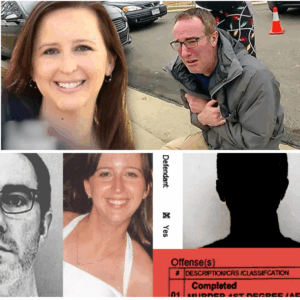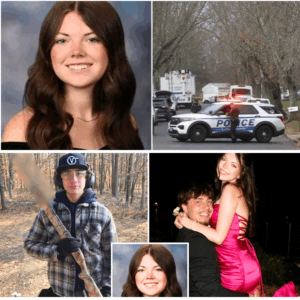In the shadowed annals of true crime, where the line between victim and statistic blurs into oblivion, few stories carry the weight of erasure like those of the unnamed dead. Across the United States, an estimated 50,000 human remains—men, women, and children—lie in unmarked graves, potter’s fields, or forgotten morgue drawers, their identities stripped away by violence, neglect, or the cruel indifference of time. They are the Jane Does and John Does of history, reduced to case files gathering dust in precinct basements, their final pleas silenced not just by death, but by a system that too often fails to listen. Enter Naming the Dead, National Geographic’s riveting six-part docuseries that doesn’t just recount these tragedies—it resurrects them, one fragile DNA strand at a time. Premiering on August 2, 2025, this series plunges viewers into a labyrinth of forensic breakthroughs and familial heartbreak, promising revelations so profound they eclipse even the labyrinthine injustices of Making a Murderer. Here, the crime isn’t just murder; it’s the systemic burial of truth itself.
What sets Naming the Dead apart in a genre bloated with sensationalist retellings is its unflinching gaze on the human cost of anonymity. Gone are the armchair detective thrills of podcast-friendly whodunits; instead, the series chronicles the painstaking, often soul-crushing work of the DNA Doe Project, a nonprofit vanguard in genetic sleuthing. Founded in 2017 by a cadre of volunteer genealogists, geneticists, and cold case enthusiasts, the organization has identified over 200 previously unknown individuals, partnering with law enforcement to weave digital breadcrumbs—distant cousin matches on public genealogy databases like GEDmatch—into tapestries of lost lives. The docuseries grants unprecedented access to this clandestine operation, shadowing a rotating cast of coroners, detectives, and lab-coated wizards as they exhume not just bones, but buried secrets. Directed by a team of investigative filmmakers with roots in The Jinx and Evil Genius, the production captures the sterile hum of sequencers alongside the raw sobs of reunions, crafting a narrative that feels less like television and more like a moral reckoning.
The series opens with a gut-punch premise: Every year, 4,500 unidentified bodies flood America’s morgues and medical examiner’s offices, vanishing into a bureaucratic black hole where underfunded agencies prioritize the living over the silenced. Naming the Dead doesn’t shy from the indictment. It exposes the labyrinthine failures of a justice system riddled with gaps—overworked pathologists dismissing cases as “inactive,” racial biases etching derogatory labels like “Unknown Negro” on grave markers, and a chilling complacency that lets serial predators like the Highway Killer roam unchecked for years. One episode’s centerpiece reveal, drawn from a decades-old Midwest atrocity, unveils a web of institutional cover-ups that protected the powerful while dooming the vulnerable, a bombshell so meticulously layered it lingers like a fever dream. Viewers report sleepless nights not from gore, but from the quiet horror of what happens when governments treat the dead as disposable data points. In an era of AI-driven surveillance, the irony stings: technology that tracks your every click can’t—or won’t—name the forgotten.
Episode one, “The Hitchhiker,” catapults us into the humid underbelly of 1980s Indiana, where the specter of serial killer Larry Eyler looms large. Eyler, dubbed the “Highway Killer,” confessed to slaying at least 21 young men, dumping their bodies along rural interstates like discarded trash. But one victim—a gaunt hitchhiker found strangled in Newton County in 1983—eluded even Eyler’s gloating tallies, buried as “Adam Doe” in a pauper’s plot. The episode follows Coroner Scott McCord, a dogged everyman with a mustache that screams small-town resolve, as he dusts off the file three decades later. Partnering with the DNA Doe Project, McCord submits bone samples to a California lab, where geneticists like Dr. Colleen Fitzpatrick— the project’s co-founder and a physicist turned bone whisperer—build family trees from wisps of autosomal DNA. The tension builds like a storm front: false leads to estranged siblings, a match to a Midwestern clan that fractures under the weight of buried grief. When the name emerges—after 40 years of silence—it’s not triumph alone, but a torrent of “what ifs.” Eyler’s reign of terror, the episode implies, thrived on anonymity; naming the dead is the ultimate act of defiance. Interviews with survivors’ advocates reveal how Eyler’s crimes exposed cracks in interstate policing, where jurisdictional turf wars let killers slip through like smoke. The reveal here, a detail too raw for spoilers, ties into suppressed police logs that hint at early warnings ignored, leaving audiences questioning not just the killer, but the complicity of those sworn to protect.
As the series unfolds, it zigzags across America’s fractured heartland, each installment a standalone elegy laced with national shame. Episode two, “A Box of Bones,” transports us to the piney woods of East Texas, where a cardboard repository in the Smith County Sheriff’s Office holds the fragmented remains of a 1985 freeway murder victim. Dubbed “Jane Doe,” her skull—cracked by blunt force—sat unclaimed for 38 years, a grim totem of investigative inertia. Enter Detective David Turner, a grizzled veteran on the cusp of retirement, whose dogged pursuit mirrors the series’ theme of second chances. With the DNA Doe Project’s aid, Turner’s team constructs a genetic mosaic from degraded marrow, tracing maternal lines through Cherokee ancestry and paternal threads to Dust Bowl migrants. The episode masterfully intercuts lab drudgery—endless hours sifting Ancestry.com uploads—with poignant vignettes of the victim’s imagined life: a runaway teen chasing dreams in the Lone Star sprawl. The breakthrough comes via a volunteer genealogist in Seattle, whose late-night epiphany cracks the case wide open. But the deeper chill lies in the systemic rot: Texas’s backlog of 1,200 unidentifieds, exacerbated by budget cuts that prioritize drug busts over dignity. A whistleblower coroner hints at “secrets in the stacks”—discarded evidence logs that could have linked Jane to a transient predator network—fueling paranoia that the state buries more than bodies.
The desert heat of Arizona scorches episode three, “The Body in the Sand,” where a sun-bleached skeleton unearthed near Apache Junction in 1993 baffles investigators with its anonymity. Too mummified for fingerprints, the young woman’s case went cold amid the Southwest’s transient underclass. Crime scene tech Stephanie Bourgeois, a no-nonsense force with a background in anthropology, revives it through the Doe Project’s network. This chapter delves into the migratory shadows of America’s borders, where undocumented dreamers vanish without echo. Genetic profiling reveals a tapestry of Latin American roots, but the real gut-wrencher is the family’s odyssey: smuggling tales from Michoacán, a mother’s vigil lit by votive candles. The identification triggers a cascade of revelations, including ties to a cross-state trafficking ring that law enforcement allegedly downplayed to avoid federal scrutiny. Here, Naming the Dead whispers of government blind spots—immigration policies that render people spectral even in death—culminating in a border-town confrontation that feels ripped from a noir thriller.
Not all stories are soaked in violence; episode four, “The Body on the Train,” chills with quiet indignity. In 1961 Nebraska, a frozen corpse tumbled from a railcar into the Platte River, crushed under ice and labeled “Unknown Negro” in a grave that reeks of Jim Crow malice. Local journalist Marresa Burke, driven by a personal reckoning with her own family’s erased history, allies with the Doe Project to rewrite the epitaph. Mitochondrial DNA points to African American lineages fractured by the Great Migration, but the episode’s horror unfolds in archival footage: segregated morgues, biased autopsies that misclassified trauma as accident. The name restoration— a Black rail worker fleeing Southern lynchings—exposes a forgotten chapter of industrial exploitation, where railroads profited from nameless labor. Burke’s on-camera breakdown, clutching yellowed manifests, humanizes the archive’s cold calculus, while hints of suppressed union records suggest corporate-government pacts that silenced worker deaths.
Ohio’s rust-belt grimness defines episode five, “The Oil Well Murder,” a 2020 homicide where a man’s body, riddled with bullets, was dumped near a Canton fracking site. Fresh detective Bryan Johnson inherits the mess, his rookie zeal clashing with departmental apathy. The Doe Project’s intervention yields a profile of Appalachian kin, but the twist—a link to environmental whistleblowing—unearths “secrets” in the extractive economy: poisoned water tables, silenced complaints, and a victim’s role in exposing corporate malfeasance. It’s a modern parable, blending blue-collar rage with eco-thriller vibes, reminding us that profit motives bury truths as deeply as dirt.
The finale, “The Man on Fire,” blazes through Atlanta’s 1996 underbelly, where a charred torso—doused in accelerant and torched in an alley—languished as an “inactive” file. Revived by Doe Project persistence, the case peels back layers of urban decay: crack-era paranoia, homophobic policing that dismissed the victim as “just another street kid.” The identification, a gutting fusion of joy and sorrow, circles back to the series’ core thesis: every name reclaimed is a rebuke to erasure. A climactic family mosaic, pieced from teary Zooms and heirloom photos, delivers the “reveal that will keep you awake”—a nexus of institutional neglect so vast it implicates decades of policy failures, from under-resourced forensics to privacy laws hobbling DNA databases.
Beyond the cases, Naming the Dead weaves a meta-narrative of redemption. Executive producer Jennifer Randolph, the Doe Project’s director, emerges as a quiet colossus, her volunteer army—coders in basements, retirees tracing obits—embodying citizen science’s triumph. The series spotlights GEDmatch’s opt-in ethos, where everyday uploads have cracked 70% of the Project’s cases, democratizing justice in ways that terrify privacy hawks. Yet it doesn’t romanticize; episodes grapple with ethical minefields—harassing distant relatives, the voyeurism of grief porn—prompting viewers to upload their own kits in solidarity.
Culturally, the docuseries arrives as a thunderclap in true crime’s overcrowded arena. Streaming on Hulu and Disney+ post-premiere, it has already snagged early buzz, with Rotten Tomatoes critics lauding its “Shakespearean empathy amid the forensics.” Fans of I’ll Be Gone in the Dark will devour its intellectual rigor, while The Staircase devotees appreciate the procedural poetry. Social media pulses with #NameTheDead challenges, where users share ancestor hunts, amplifying the Project’s mission. In a post-Roe, post-George Floyd landscape, it resonates as a requiem for the marginalized—trans folks misgendered in death, migrants rendered invisible, Black and Indigenous lives undervalued.
Ultimately, Naming the Dead isn’t entertainment; it’s exorcism. It forces confrontation with America’s underbelly: a nation that mourns celebrities but forgets the faceless, where 50,000 ghosts demand their due. The series ends not with closure, but a clarion call—upload your DNA, fund the fighters, demand accountability. In unmasking the nameless, it unmasks us all, leaving a scar that itches for justice. Sleep may evade you, but awakening? That’s the point. The dead are speaking; will we finally listen?


